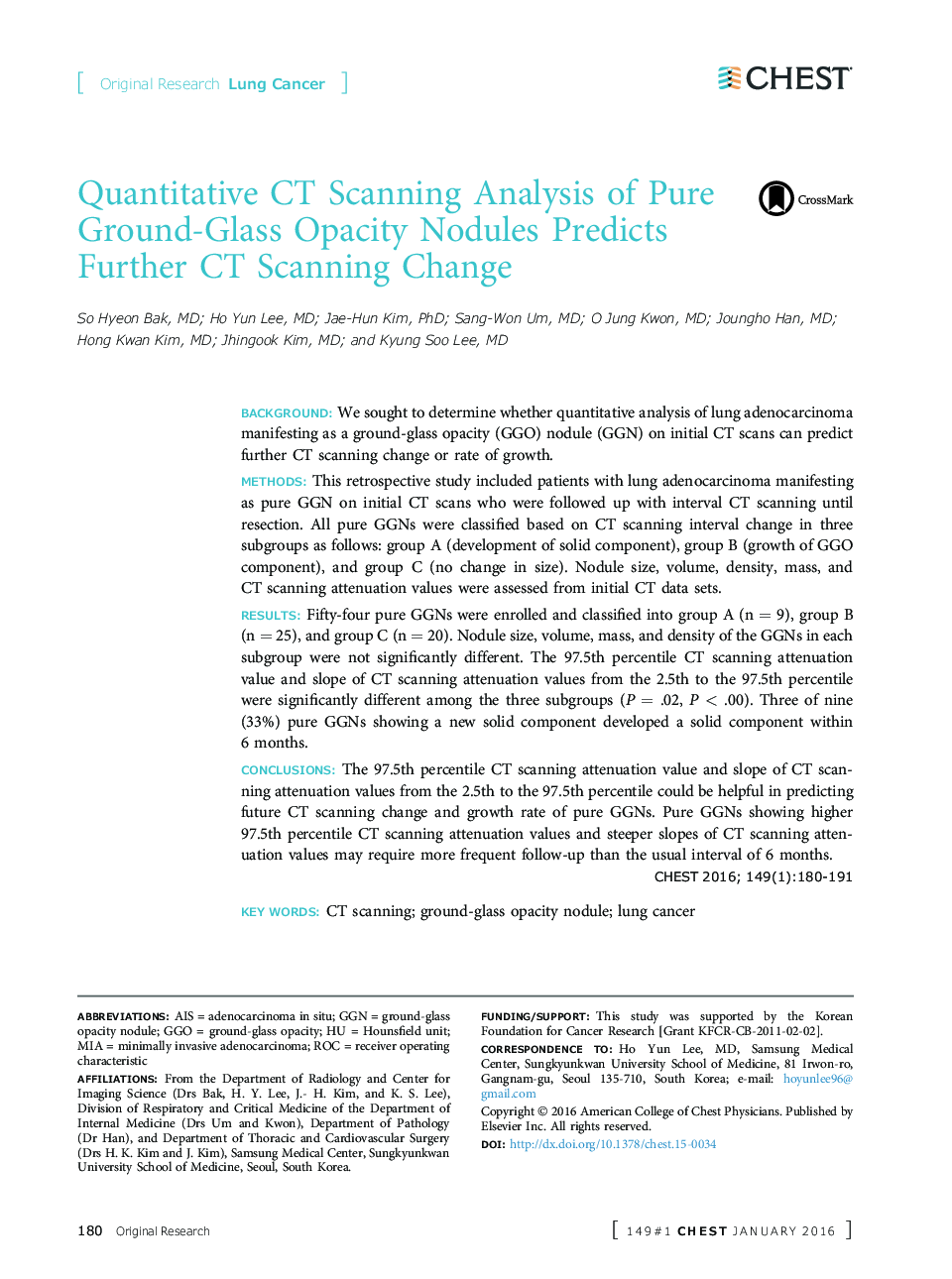| Article ID | Journal | Published Year | Pages | File Type |
|---|---|---|---|---|
| 5953028 | Chest | 2016 | 12 Pages |
BackgroundWe sought to determine whether quantitative analysis of lung adenocarcinoma manifesting as a ground-glass opacity (GGO) nodule (GGN) on initial CT scans can predict further CT scanning change or rate of growth.MethodsThis retrospective study included patients with lung adenocarcinoma manifesting as pure GGN on initial CT scans who were followed up with interval CT scanning until resection. All pure GGNs were classified based on CT scanning interval change in three subgroups as follows: group A (development of solid component), group B (growth of GGO component), and group C (no change in size). Nodule size, volume, density, mass, and CT scanning attenuation values were assessed from initial CT data sets.ResultsFifty-four pure GGNs were enrolled and classified into group A (n = 9), group B (n = 25), and group C (n = 20). Nodule size, volume, mass, and density of the GGNs in each subgroup were not significantly different. The 97.5th percentile CT scanning attenuation value and slope of CT scanning attenuation values from the 2.5th to the 97.5th percentile were significantly different among the three subgroups (P = .02, P < .00). Three of nine (33%) pure GGNs showing a new solid component developed a solid component within 6 months.ConclusionsThe 97.5th percentile CT scanning attenuation value and slope of CT scanning attenuation values from the 2.5th to the 97.5th percentile could be helpful in predicting future CT scanning change and growth rate of pure GGNs. Pure GGNs showing higher 97.5th percentile CT scanning attenuation values and steeper slopes of CT scanning attenuation values may require more frequent follow-up than the usual interval of 6 months.
